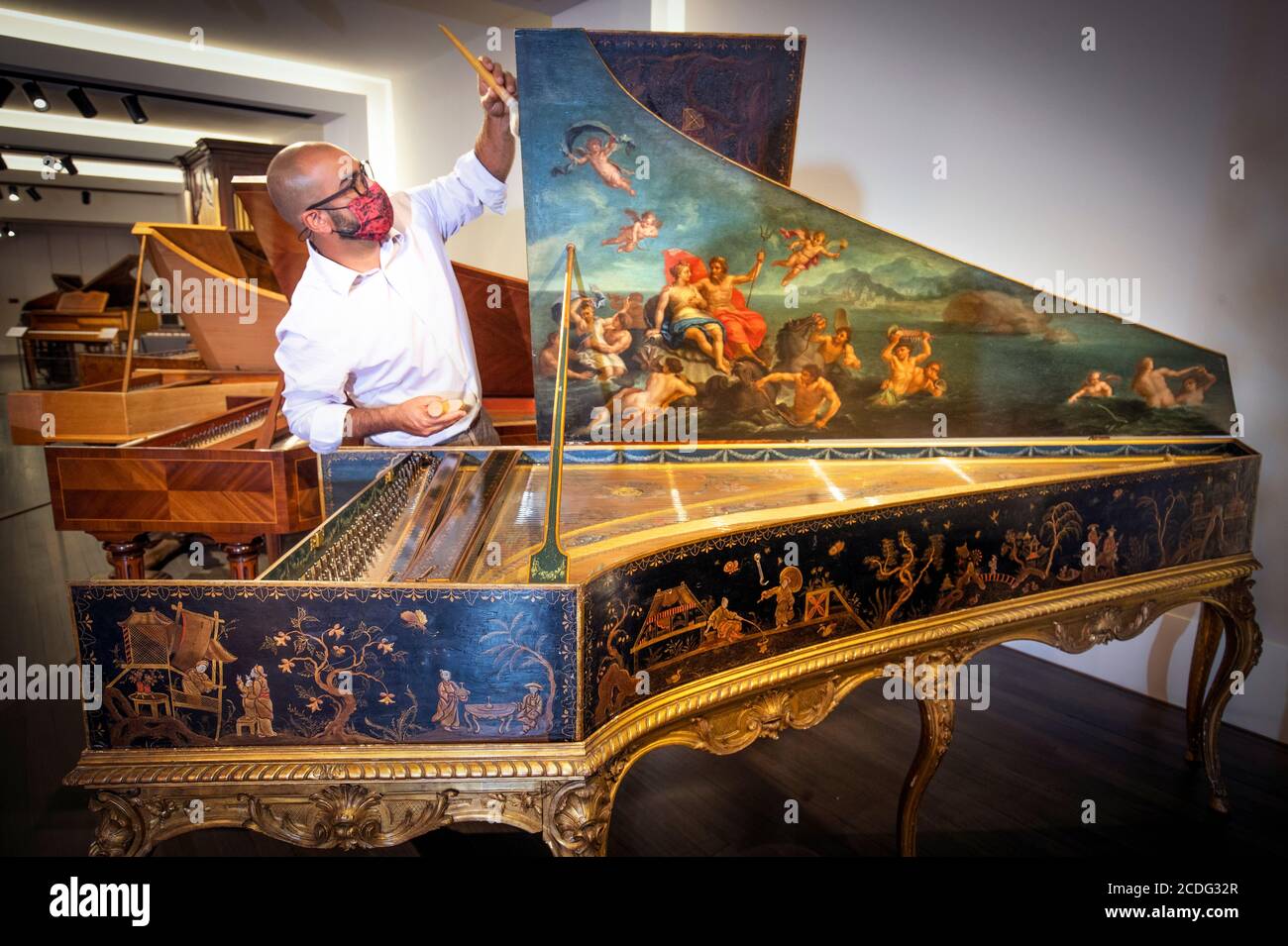
French Double Harpsichord Manual Harpsichord By
Its action is simplicity itself: press the key, and a thin wooden jack moves up vertically a small plectra on the jack pushes past the string and sets it in vibration. The greatest difference is that the harpsichord produces sound by plucking the string and not striking the string with a hammer. Though it superficially resembles the piano, it's actually a very different instrument, requiring a different playing approach and technique. Sold The harpsichord, or cembalo in Italian, predates the piano by centuries. 4175 TX French double manual harpsichord by William Hyman, 1978, FF - f ’’’, 8’, 8’, 4’, buff, ebony naturals, bone capped sharps, non transposing, wooden jacks, painted blue/gray with gold banding, painted sound board, gilded stand with fluted turned legs.
This instrument has a spruce soundboard with a gilt rose with a harp-playing and and the initials WD, and ebony-covered naturals and bone-capped accidentals with pear wood arcades. It is a double manual harpsichord with a compass of FF - f3, and a disposition of 2 x 8’, 1 x 4’. The most flexible system is the French 'shove coupler', in which the lower manual slides forward and backward.This harpsichord, number 267, was made by William Dowd in Cambridge, Massachusetts in 1980.
The keys on a harpsichord are also very light, and much less forgiving of technical inaccuracies than on the piano. By that logic, all pianists are also automatically organists and accordionists. Because it is largely devoid of touch-responsive dynamics, playing the harpsichord requires not arm weight or leverage, but utmost finger clarity and a purely agogic sense of phrasing. The overwhelming (and persistently ignorant) opinion of many pianists who are not acquainted with the harpsichord is that all pianists can play the harpsichord because they both have keyboards.

French Double Harpsichord Skin Is Required
Harpsichords built today are based either directly or closely upon the originals, and to travel to museums and private collections to do research on an original Ruckers or Taskin is required fare for a genuine harpsichord maker. Even so, they were popularized by many keyboard performers in the 20th Century-from Wanda Landowska to Glenn Gould, who recorded on such a harpsichord during a brief hiatus from the piano. Today, these revival instruments are almost universally eschewed in favour of historical copies.Makers today follow the trend established a century ago by Arnold Dolmetsch, who is perhaps the single most important pioneer of our current concept of historical/early music resurrection. Revival instruments held their tuning better, but lacked the timbral clarity and personality of the original instruments.
The player also has the choice of "coupling" the keyboards, which means either playing them separately, or controlling both keyboards simultaneously from the bottom manual.When a key is depressed on the harpsichord, one or more jacks are activated. Whereas the early Flemish double manual harpsichords had the two keyboards staggered in pitch in order to facilitate transposition, later models almost always were either built (rebuilt) to have the two keyboards aligned. But the real goal is to reproduce the sound that would have resonated from harpsichords centuries ago.Harpsichords can either come in single or double manual form, referring to the number of keyboards.
8' 8' 4').Stops are another feature the harpsichord shares with the pipe organ. When using the 4-foot in combination with one or more 8-foot choirs, you get a bigger, fuller sound (ie. Many instruments will also have a 4-foot choir: press middle C, and hear the C above. All harpsichords have at least one 8-foot choir double manuals, naturally, have two (known as 8' 8' disposition). The stardard is the 8-foot string (following an organ nomenclature): press middle C and hear middle C. Each set of strings, known as a "choir", has a pitch designation.


Click here for more information. He builds historically-based Flemish, French, and German harpsichords, as well as virginals, clavichords, and Viennese fortepianos. Tomlinson of Vancouver comes highly recommended. Kottick, are an invaluable resource.If you're looking for your own instrument, Craig C.


 0 kommentar(er)
0 kommentar(er)
